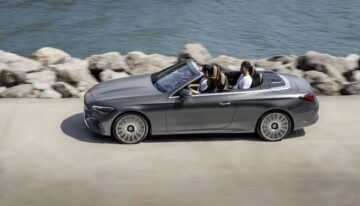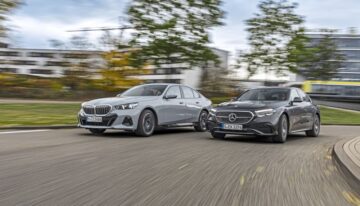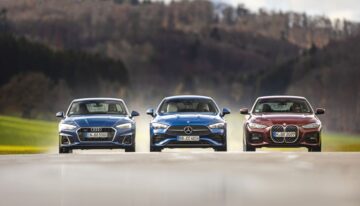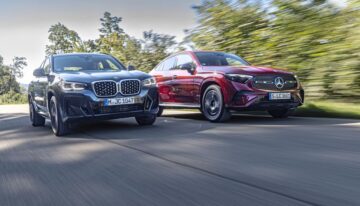BMW has overtaken Mercedes in Q1 2024 sales. Never has the gap between the two brands been so wide.
As we wrote a few days ago, Mercedes sold 463,000 units in Q1 2024, excluding vans, which is down 8% compared to Q1 2023. In the same period, BMW sold 531,039 units (+2.5%). Thus, the gap between BMW and Mercedes was 68,039 units. If this momentum continues in the remaining quarters of 2024, BMW could end 2024 with a lead of more than a quarter of a million cars.
The situation is even more dramatic for electric model sales. Mercedes sold just 47,500 electric models in the first quarter of 2024 (8%), while BMW sold 78,691 electric units (40.6%) in the same period, with the i4, iX1, iX, and i7 models contributing to this success.
BMW only reports data by region with Mini, so we can’t make a direct comparison. However, we should note that BMW and Mini sold 277,784 units in Europe in the first three months of 2024 (+5.5%), while Mercedes found only 160,200 customers in Europe in the same period (-2%).
Mercedes doesn’t report separately AMG division sales data for Q1 2024 but only total sales of the Top-End segment (G-Class, Maybach, S-Class, GLS, EQS, EQS SUV, Mercedes-AMG). Only 66,600 units in the Top-End segment were sold in Q1 2024, 27% less than in Q1 2023.
In Q1 2023, Mercedes had sold 40,300 AMG units. If the 27% drop percentage holds for AMG, it means that in Q1 2024, Mercedes sold around 30,000 AMG units. By comparison, in the first quarter of 2024, 48,110 customers bought a BMW M model (+3.6%).
The causes of the decline in Mercedes sales are related both to problems in the supply chain of various components, which is a general problem in the car industry, and also to model policy.
Ola Kallenius, Mercedes CEO, has decided to restrict the compact range while BMW is expanding it. BMW currently has six compact models: the X1, X2, 2 Series Coupe, 2 Series Gran Coupe, 2 Series Active Tourer, and 1 Series. Mercedes also has six models in the compact range, but some of them are in a very narrow niche, like the CLA Shooting Brake, and it doesn’t have an SUV coupe in this segment. Also, Mercedes, a coupe specialist, has no classic two-door coupe in the segment. The A-Class and the B-Class will disappear in the next generation.
As for the electric model range, Mercedes has no models in the most attractive segments of the market, the mid-class, where the Tesla Model 3 and Tesla Model Y sell hundreds of thousands of units. In the mid-class segment, BMW has the i4 four-door coupe and the iX3 SUV, while next year, the first model of the new generation Neue Klasse, the successor to the iX3, arrives. Mercedes has to wait until 2026 when the C-Class EV and GLC EV, built on the new MB.EA platform will appear.
In addition, sales of Mercedes electric models suffer from higher prices than BMW. Having developed the i3 on a dedicated electric platform, the Bavarians have opted later for a multi-propulsion solution using the conventional UKL II (for the compact range) and CLAR (for rear-wheel drive-based models) architectures for both conventional and electric models. This strategy reduced costs and gave them greater flexibility to adapt to market demand, producing all forms of propulsion on the same production line.
In addition, BMW has an electric version for every model in the relevant segments of the market, which Mercedes cannot offer at the moment.













